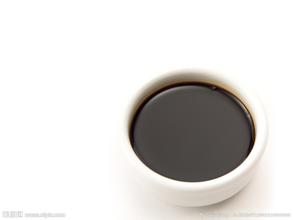Yerga Sherphine Cochel G1 Taste Description Flavor Variety Region Coffee Bean Estate Introduction
Yega Chenkee Cochel G1 taste describes the flavor variety production area coffee bean manor introduction,
There is a strict standard for collecting red fruits (as a result of coffee trees). Before exposure to coffee fruits, unripe green fruits or defective fruits are removed manually, and damaged or moldy fruits are removed during the sun drying process. after two weeks, the sugar and essence of the flesh and essence seep into the coffee beans, the water content is reduced to 12%, and then scrape the hardened pulp, pectin layer and pods with a planer. Take out the coffee beans and test the density and color of the beans. After eliminating the defective beans, finally, the workers picked out the defective beans with the naked eye and screened them layer by layer, resulting in the cleanliness and vulgarity of Yejia snow caffeine sun-dried beans and a strong attractive fruit aroma.
One of the rarest Ethiopian coffee beans on the market is Yirgachaffe, which is exported to Japan and Europe but is rarely seen in the United States. This is because Dallmeyer, the German coffee roaster owned by Nestle, has established close ties with the growers of Yega Snow Coffee, thus obtaining the largest single supply of the coffee beans Ethiopia is an important coffee producer, with about 12 million people engaged in coffee production and a major exporter of Arabica beans in Africa. The high-quality coffee here is of excellent quality and is worth looking for. A variety of coffee cultivation methods can be found in Ethiopia: everything from wild coffee forests and semi-developed land to traditionally operated plots to modern plantations. About 50% of the coffee is grown at an altitude of more than 1500 meters.
[product name]: Ethiopia Yejasuffe (Ethiopia Yirgacheffe)
[quality rating]: WP Grade 2
[baking degree]: moderate baking is recommended (Medium Roast or City Roast)
[grade]: excellent
[particles]: ★ plump
[acidity]: ★★★★ slightly sour, dark chocolate aftertaste
[equilibrium]: ★★★★ is very stable
[flavor]: very unique, delicate and rich taste, with fruit and wild flavor of the wine.
[coffee producing areas]: Gedeo District, Sidamo Province, Ethiopia (EthiopiaSidamo)
[raw bean treatment]: washing and refining method
[special point]: the coffee tree originated in Ethiopia, which was originally a wild plant here. The name "coffee" comes from the Ethiopian town "Kaffa". In fact, many coffee trees in Ethiopia are still wild plants, and the coffee grown on this coffee tree is full-grained and slightly alcoholic.

Important Notice :
前街咖啡 FrontStreet Coffee has moved to new addredd:
FrontStreet Coffee Address: 315,Donghua East Road,GuangZhou
Tel:020 38364473
- Prev

Introduction to the making method, brewing method and brand price of Yunnan small-grain coffee
Yunnan small-grain coffee making method, brewing method, brand price introduction Yunnan can be said to be the only province still growing Arabica in a large area, mainly in Dehong Lincang, Baoshan, western Yunnan and Pu'er Banna in southern Yunnan. The coffee introduced by missionaries in the 19th century was mainly Robusta, and then it was no longer planted on a large scale. In the 1950s, experts assisted by the Soviet Union put the world
- Next

Brief introduction of Panamanian Flower Butterfly Coffee Bean Flavor description method Variety characteristics producing area
Boquete is a high-altitude volcanic area, because the Baru Volcano volcano brings quite fertile soil, towering terrain, cold and humid air, different sunshine, abundant rainfall, and rivers flow through it, creating high-quality Panamanian boutique coffee. This batch of coffee, which is grown in the same area as Jade Manor, happens to be located in
Related
- Detailed explanation of Jadeite planting Land in Panamanian Jadeite Manor introduction to the grading system of Jadeite competitive bidding, Red bid, Green bid and Rose Summer
- Story of Coffee planting in Brenka region of Costa Rica Stonehenge Manor anaerobic heavy honey treatment of flavor mouth
- What's on the barrel of Blue Mountain Coffee beans?
- Can American coffee also pull flowers? How to use hot American style to pull out a good-looking pattern?
- Can you make a cold extract with coffee beans? What is the right proportion for cold-extracted coffee formula?
- Indonesian PWN Gold Mandrine Coffee Origin Features Flavor How to Chong? Mandolin coffee is American.
- A brief introduction to the flavor characteristics of Brazilian yellow bourbon coffee beans
- What is the effect of different water quality on the flavor of cold-extracted coffee? What kind of water is best for brewing coffee?
- Why do you think of Rose Summer whenever you mention Panamanian coffee?
- Introduction to the characteristics of authentic blue mountain coffee bean producing areas? What is the CIB Coffee Authority in Jamaica?

